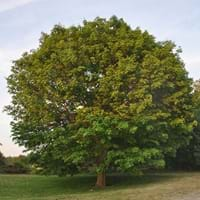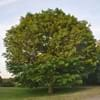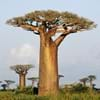Life Span
Perennial
Perennial
Origin
Europe
Eastern Asia, Japan
Types
Bigleaf Maple, Black Maple, Silver Maple
Not Available
Habitat
Forest edges, Open areas, Roadsides, wastelands
Old fields, stream banks
USDA Hardiness Zone
3-7
4-8
Sunset Zone
A2, A3, 1a, 1b, 2a, 2b, 3a, 3b, 4, 5, 6, 7, 8, 9, 14, 15, 16, 17
A3, 2b, 3a, 3b, 4, 5, 6, 7, 8, 9, 10, 11, 12, 13, 14, 15, 16, 17, 18, 19, 20, 21, 22, 23, 24
Habit
Oval or Rounded
Oval or Rounded
Flower Color
Lemon yellow, Yellow green, Chartreuse
Yellow, Yellow green
Flower Color Modifier
Bicolor
Not Available
Fruit Color
Green, Tan, Sandy Brown
Red orange
Leaf Color in Spring
Green, Light Green
Light Green
Leaf Color in Summer
Green, Dark Green
Green
Leaf Color in Fall
Yellow, Red, Lemon yellow, Yellow green
Purple, Orange, Burgundy, Crimson
Leaf Color in Winter
Not Available
Not Available
Leaf Shape
Maple shaped
Obovate
Plant Season
Spring, Summer, Fall
Spring, Summer, Fall, Winter
Sunlight
Full Sun, Partial Sun, Partial shade
Full Sun, Partial Sun
Type of Soil
Clay, Loam, Sand
Clay, Loam, Sand
The pH of Soil
Acidic, Neutral, Alkaline
Acidic, Neutral, Alkaline
Soil Drainage
Average
Average
Bloom Time
Early Spring, Spring
Spring, Late Spring
Tolerances
Pollution, Drought, Soil Compaction
Pollution, Drought, Salt, Soil Compaction
Where to Plant?
Ground
Ground, Pot
How to Plant?
Stem Planting
Seedlings
Plant Maintenance
Medium
Medium
Watering Requirements
Do Not over Water
Requires regular watering during dry weather
In Summer
Lots of watering
Lots of watering
In Spring
Moderate
Moderate
In Winter
Average Water
Average Water
Soil pH
Acidic, Neutral, Alkaline
Acidic, Neutral, Alkaline
Soil Type
Clay, Loam, Sand
Clay, Loam, Sand
Soil Drainage Capacity
Average
Average
Sun Exposure
Full Sun, Partial Sun, Partial shade
Full Sun, Partial Sun
Pruning
Remove damaged leaves, Remove dead leaves
Remove damaged leaves, Remove dead branches, Remove dead leaves
Fertilizers
Doesn't require fertilization when grown in rich soil
All-Purpose Liquid Fertilizer
Pests and Diseases
Decline, Girdling Roots, Red blotch, Verticillium Wilt, Wetwood
Red blotch, Sunken patches
Plant Tolerance
Drought
Drought
Flowers
Insignificant
Insignificant
Flower Petal Number
Single
Single
Foliage Texture
Coarse
Medium
Foliage Sheen
Matte
Matte
Invasive
Sometimes
Sometimes
Attracts
Not Available
Birds
Allergy
Not Available
Not Available
Aesthetic Uses
Showy Purposes
Borders
Beauty Benefits
Not Available
Not Available
Environmental Uses
Air purification
Air purification
Medicinal Uses
Not Available
Anthelmintic, Antibacterial, Antiseptic, Cancer
Part of Plant Used
Whole plant, Wood
Fruits, Leaves
Other Uses
Used as Ornamental plant, Used for its medicinal properties
Used to make yellow dye
Used As Indoor Plant
No
No
Used As Outdoor Plant
Yes
Yes
Garden Design
Feature Plant, Shade Trees, Street Trees
Edging, Foundation, Hedges, Mixed Border, Rock Garden, Wall
Botanical Name
ACER platanoides
BERBERIS thunbergii
Common Name
Norway Maple
Japanese Barberry
In Hindi
नॉर्वे मेपल
Japanese Barberry
In German
Spitzahorn
Thunberg-Berberitze
In French
Norvège Maple
Berberis thunbergii
In Spanish
Noruega arce
Berberis thunbergii
In Greek
Νεροπλάτανος
Japanese Barberry
In Portuguese
Noruega bordo
Japanese Barberry
In Polish
klon zwyczajny
Berberys Thunberga
In Latin
Acer platanoides
Japanese Barberry
Phylum
Magnoliophyta
Magnoliophyta
Class
Magnoliopsida
Magnoliopsida
Order
Sapindales
Ranunculales
Family
Aceraceae
Berberidaceae
Clade
Angiosperms, Eudicots, Rosids
Angiosperms, Eudicots
Tribe
Not Available
Not Available
Subfamily
Not Available
Not Available
Number of Species
Not Available
Not Available
Season and Care of Norway Maple and Japanese Barberry
Season and care of Norway Maple and Japanese Barberry is important to know. While considering everything about Norway Maple and Japanese Barberry Care, growing season is an essential factor. Norway Maple season is Spring, Summer and Fall and Japanese Barberry season is Spring, Summer and Fall. The type of soil for Norway Maple is Clay, Loam, Sand and for Japanese Barberry is Clay, Loam, Sand while the PH of soil for Norway Maple is Acidic, Neutral, Alkaline and for Japanese Barberry is Acidic, Neutral, Alkaline.
Norway Maple and Japanese Barberry Physical Information
Norway Maple and Japanese Barberry physical information is very important for comparison. Norway Maple height is 1,220.00 cm and width 910.00 cm whereas Japanese Barberry height is 90.00 cm and width 120.00 cm. The color specification of Norway Maple and Japanese Barberry are as follows:
Norway Maple flower color: Lemon yellow, Yellow green and Chartreuse
Norway Maple leaf color: Green and Light Green
Japanese Barberry flower color: Yellow and Yellow green
- Japanese Barberry leaf color: Light Green
Care of Norway Maple and Japanese Barberry
Care of Norway Maple and Japanese Barberry include pruning, fertilizers, watering etc. Norway Maple pruning is done Remove damaged leaves and Remove dead leaves and Japanese Barberry pruning is done Remove damaged leaves, Remove dead branches and Remove dead leaves. In summer Norway Maple needs Lots of watering and in winter, it needs Average Water. Whereas, in summer Japanese Barberry needs Lots of watering and in winter, it needs Average Water.





